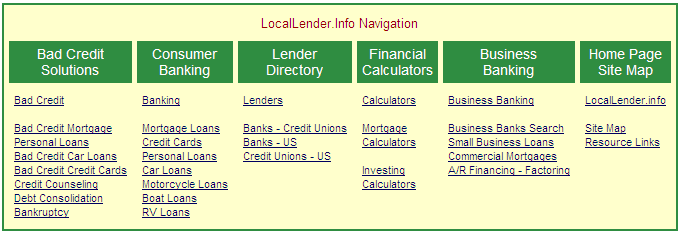Bad credit credit cards are offered by many banks as financial tools to help people re-establish their good credit rating.
It's unfortunate when people fall on financial hard times, can't afford to pay their bills on time and damage their credit.
However, many banks feel that such people had good intentions to pay their bills, and would do so if given another chance.
Banks that feel this way offer bad credit credit cards as a means to re-establish a solid credit history.
There are two types of bad credit credit cards:
- Secured Bad Credit Credit Card:
With this type of bad credit credit card, the bank will require you to deposit cash into a savings account (i.e. $500-$1,500).
The bank will then issue you a card with a spending limit equal to the amount deposited with the bank. The money you deposit
serves as collateral for use of the bad credit credit card. If you fail to pay your credit card balance, the bank will use the money
in the savings account to pay the balance.
- Unsecured Bad Credit Credit Card:
With this type of bad credit credit card, the bank will likely issue you a low spending limit (i.e. $500). However, you will not have to
deposit any money (for collateral) with this type of card. The bank will increase your spending limit over time as you
prove your ability to make the monthly payments.
The fact that bad credit credit cards carry a high interest rate (most likely 20% or more) shouldn't prevent you from getting
one in an effort to get your credit back on track. If you use a bad credit credit card for small purchases for a year or two and consistently pay the entire balance every month,
not only will you not be charged interest, but you will rebuild your credit and be able to get lower rate loans in the future.
Credit.com offers a service that can help you get a personal loan.
Click Personal Loans
